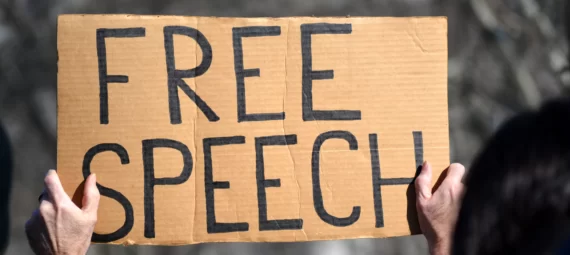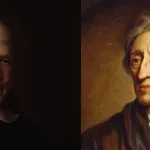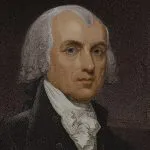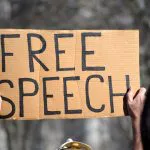The United States’ commitment to free speech, enshrined in the First Amendment, has a complex and turbulent history. While today it stands as a cornerstone of American democracy, the road to protecting this fundamental right has been fraught with contradictions, setbacks, and continuous battles.
The Origins of Free Speech Protections
Following the ratification of the U.S. Constitution, five states threatened to secede unless a Bill of Rights was added. The framers, who believed in states’ right to secede, took these demands seriously. James Madison was tasked with drafting these amendments. In his writing of the First Amendment, he was intentional with the language, particularly in ensuring that the text read: “Congress shall make no law abridging the freedom of speech.” This small but significant inclusion of “the” emphasized a key point: the right to free speech was not something granted by the government but a pre-existing right derived from human nature.
Madison’s insistence on this wording underscores an important philosophical foundation of the Bill of Rights. Since this right was not created by the government, the government did not have the authority to take it away. The role of the state was to protect it, not interfere with it. However, this commitment to safeguarding free speech was short-lived.
The Alien and Sedition Acts: The First Breach
Only seven years after the Bill of Rights was ratified in 1791, Congress passed the Alien and Sedition Acts of 1798. Motivated by fears of French influence and internal dissent, these laws sharply restricted free speech. One part of the Act imposed a waiting period for citizenship—14 years if the person was French. More troublingly, the Sedition Act made it a crime to criticize the government or the president, with offenders facing up to two years in prison.
The irony was glaring: the very generation that had just enshrined free speech into law now sought to limit it. Their goal was clear—shield the government from criticism at a time of political insecurity.
One of the most well-known challengers to these acts was Congressman Matthew Lyon. Lyon tested the limits of the Sedition Act by publicly mocking President John Adams. Adams was known to wear an elaborate purple robe with gold epaulets, and Lyon greeted him with remarks like “Good morning, Your Majesty” and “Good morning, Your Pomposity.” However, it wasn’t until Lyon greeted him with “Good morning, Your Rotundity,” a jab at Adams’ weight, that legal action was taken. Lyon was convicted under the Sedition Act for mocking the president’s appearance and sentenced to two years in federal prison.
Despite his imprisonment, Lyon ran for office again and won, showing that even under suppression, the public rallied behind the principle of free speech. He was later pardoned by Thomas Jefferson, who also returned Lyon’s seized property—a 430-acre farm.
Suppression Continues: The Civil War and Lincoln’s Actions
The struggle to protect free speech did not end with the Alien and Sedition Acts. During the Civil War, President Abraham Lincoln suspended the writ of habeas corpus, which guarantees a person’s right to appear before a judge after being arrested. More notably, Lincoln jailed over 3,000 journalists in the North who criticized his wartime policies, claiming that the Constitution granted him emergency powers to silence dissent during times of crisis.
However, following Lincoln’s assassination, a unanimous Supreme Court ruling, made by justices he had appointed, declared that no such emergency powers existed in the Constitution. They affirmed that the right to free speech was valid during both war and peace. This ruling was a significant victory for free speech, but the damage done during the war was a stark reminder of how fragile this right can be under pressure.
World War I and Wilson’s Crackdown
President Woodrow Wilson also tested the limits of free speech during World War I. In one notable instance, students from Princeton University stood outside a draft office in Washington, D.C., and read what Wilson’s administration deemed subversive material—the Declaration of Independence. The students were arrested by J. Edgar Hoover, who was then a young government agent. When asked how such an arrest could happen in light of the First Amendment, Wilson’s administration defended the move by claiming that the Constitution’s restraints applied only to Congress, not to the president.
This justification sparked widespread concern over the extent to which the government could suppress dissent under the guise of national security. Once again, history showed that protecting free speech required constant vigilance.
The Ongoing Struggle for Free Speech
These historical episodes demonstrate a recurring pattern in American history. Each generation faces its own challenges in protecting the rights guaranteed by the First Amendment. Whether in the face of political turmoil, wartime insecurity, or societal fear, free speech has often been the first right to come under attack.
As James Madison and the framers of the Constitution understood, our rights do not come from the government—they are inherent to our humanity. The government’s role is to protect these rights, not to grant or revoke them. However, the repeated attempts to suppress free speech reveal a sobering truth: freedom of expression is not a static guarantee, but one that requires continual defense.
The history of free speech in the U.S. is a reminder that the fight for liberty is never truly over. It’s a constant effort to remain vigilant, to question authority, and to ensure that the principles enshrined in the Bill of Rights are upheld for future generations.





